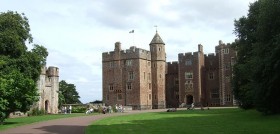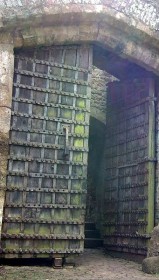Follow the brown signs



The Brown Sign Torch Relay Day 3: Castles & feisty 17th Century chicks
 Today the Olympic torch will travel from Exeter in Devon to Taunton in Somerset (the live location and everything torch related is here and I’m just as obsessed as ever with this site FYI). I had a look at the map but at the time the live location was “temporarily unavailable” so instead of my usual research into the area I decided to get a little help from my tweep friends on Twitter. I asked for nominations of brown signed destinations along the route today which deserved to be featured and the first reply came from @charlecoteparkNT telling me that Dunster Castle would be welcoming the flame later on this afternoon. Being the complete and utter massive nerd I am I absolutely love history and especially buildings and places where hundreds of years history has gone on all around them, they always have such rich stories to tell and Dunster Castle is no exception.
Today the Olympic torch will travel from Exeter in Devon to Taunton in Somerset (the live location and everything torch related is here and I’m just as obsessed as ever with this site FYI). I had a look at the map but at the time the live location was “temporarily unavailable” so instead of my usual research into the area I decided to get a little help from my tweep friends on Twitter. I asked for nominations of brown signed destinations along the route today which deserved to be featured and the first reply came from @charlecoteparkNT telling me that Dunster Castle would be welcoming the flame later on this afternoon. Being the complete and utter massive nerd I am I absolutely love history and especially buildings and places where hundreds of years history has gone on all around them, they always have such rich stories to tell and Dunster Castle is no exception.
 The National Trust’s Dunster Castle page tells me that a castle has existed on this site (although not in the exact form we see it today) since at least Norman times and still retains it’s medieval gatehouse and ruined tower. The castle’s owners suffered their fair share of debt (upkeep of a castle isn’t going to be cheap let’s face it), owners died without heirs and many simply preferred not to live in the draughty old place, leaving the castle to stand for long periods uninhabited. However new owners and inheritors put their own different stamps on the place over the years by adding and changing the castle frequently, thus it is now made up by a range of architectural styles which reflect British tastes and fashion through the ages, from medieval ramparts to the rather eccentric 1950s “Blue Kitchen”. The castle changed hands many times but it was The Luttrell Family who it was mainly passed through for 600 years.
The National Trust’s Dunster Castle page tells me that a castle has existed on this site (although not in the exact form we see it today) since at least Norman times and still retains it’s medieval gatehouse and ruined tower. The castle’s owners suffered their fair share of debt (upkeep of a castle isn’t going to be cheap let’s face it), owners died without heirs and many simply preferred not to live in the draughty old place, leaving the castle to stand for long periods uninhabited. However new owners and inheritors put their own different stamps on the place over the years by adding and changing the castle frequently, thus it is now made up by a range of architectural styles which reflect British tastes and fashion through the ages, from medieval ramparts to the rather eccentric 1950s “Blue Kitchen”. The castle changed hands many times but it was The Luttrell Family who it was mainly passed through for 600 years.
My favourite Luttrell has to be Mary, wife of Thomas, who in 1640 during the English Civil War sided with parliament and prepared his castle in the event of a Royalist attack. The castle was indeed attacked by the Royalist William Seymore, Duke of Somerset in 1642, but his siege failed when Mary Luttrell herself lead the successful defence of the castle and his attackers were driven back by the garrison.
Dunster Castle boasts all the great architecture, preserved rooms, views, gardens, curiosities and stories that every great old building of this country has, showcased brilliantly as ever by the dedicated hard work of the National Trust, who acquired it in the 1970s. What I love is that each one of these buildings is unique and literally shaped by the very different people who inherited and played important parts in each one’s history. Enjoy your hosting of the Olympic flame Dunster, another thing to go down in your eventful history 🙂






